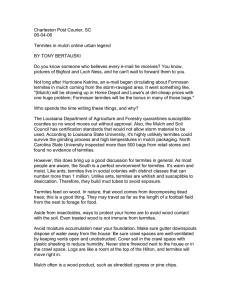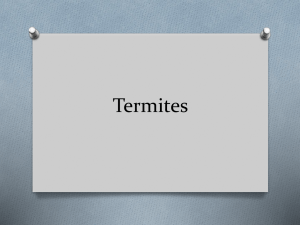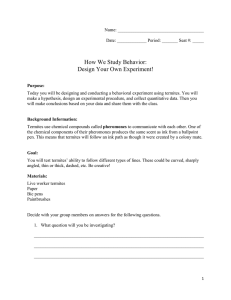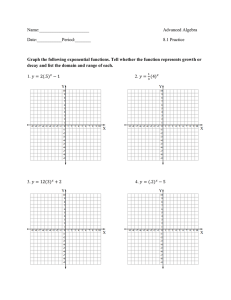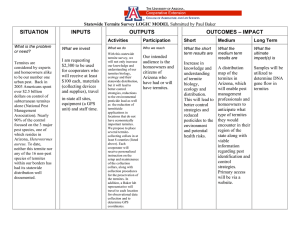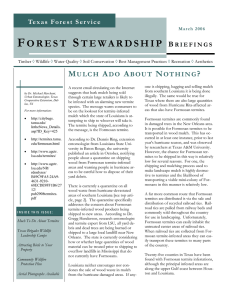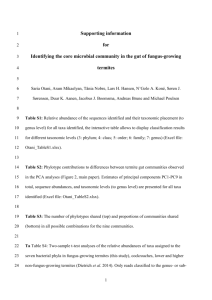Press of Atlantic City, NJ 03/09/06
advertisement
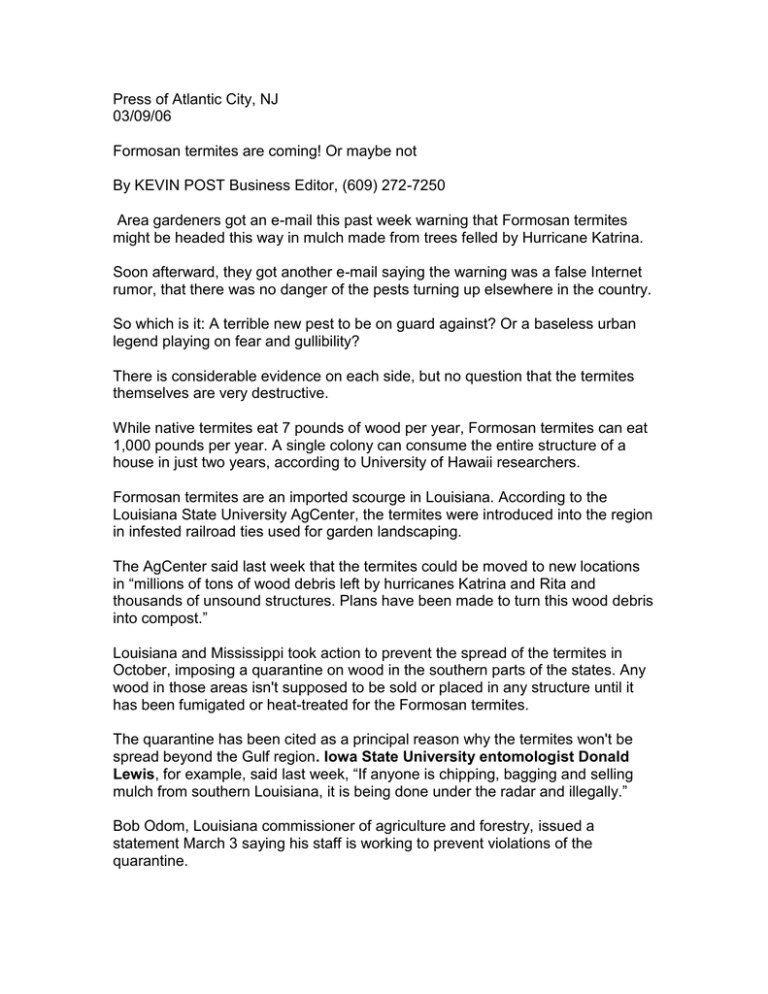
Press of Atlantic City, NJ 03/09/06 Formosan termites are coming! Or maybe not By KEVIN POST Business Editor, (609) 272-7250 Area gardeners got an e-mail this past week warning that Formosan termites might be headed this way in mulch made from trees felled by Hurricane Katrina. Soon afterward, they got another e-mail saying the warning was a false Internet rumor, that there was no danger of the pests turning up elsewhere in the country. So which is it: A terrible new pest to be on guard against? Or a baseless urban legend playing on fear and gullibility? There is considerable evidence on each side, but no question that the termites themselves are very destructive. While native termites eat 7 pounds of wood per year, Formosan termites can eat 1,000 pounds per year. A single colony can consume the entire structure of a house in just two years, according to University of Hawaii researchers. Formosan termites are an imported scourge in Louisiana. According to the Louisiana State University AgCenter, the termites were introduced into the region in infested railroad ties used for garden landscaping. The AgCenter said last week that the termites could be moved to new locations in “millions of tons of wood debris left by hurricanes Katrina and Rita and thousands of unsound structures. Plans have been made to turn this wood debris into compost.” Louisiana and Mississippi took action to prevent the spread of the termites in October, imposing a quarantine on wood in the southern parts of the states. Any wood in those areas isn't supposed to be sold or placed in any structure until it has been fumigated or heat-treated for the Formosan termites. The quarantine has been cited as a principal reason why the termites won't be spread beyond the Gulf region. Iowa State University entomologist Donald Lewis, for example, said last week, “If anyone is chipping, bagging and selling mulch from southern Louisiana, it is being done under the radar and illegally.” Bob Odom, Louisiana commissioner of agriculture and forestry, issued a statement March 3 saying his staff is working to prevent violations of the quarantine. “In my opinion, someone is using the Internet to cause hysteria about a problem that doesn't really exist,” Odom said. “If there are people out there who know about someone violating the quarantines, then they need to report it to us. We'll shut the culprits down real quick, but it has to be reported.” The Mulch & Soil Council, an industry association, said it was unlikely that the soft-bodied termite could withstand the chipping or bagging process for mulch. However, a story last week in the Maui News in Hawaii told of a homeowner finding white grubs in bags of mulch. A state entomologist identified them as Formosan termites. The original e-mail warning mentioned national home centers as potential sources of termite-contaminated mulch. Home Depot already has stated that it doesn't use mulch from the Gulf area and has sent signs and stickers to stores saying that its mulch is certified by the Mulch & Soil Council and guaranteed termite-free. An easy way to be sure of the origin of mulch is to buy it from the Atlantic County Utilities Authority and other local governmental agencies. Their mulch is made from trees and branches that grew in southern New Jersey. To e-mail Kevin Post at The Press: KPost@pressofac.com
